FAQS
Fly-fishing flies fall into four basic categories: dry flies, wet flies, streamers, and nymphs.
- Dry flies: Anglers use these flies to fish the water’s surface. They imitate either the adult stage of aquatic-born insects such as mayflies, or terrestrial insects like grasshoppers that have fallen into the water.
- Wet flies: These flies are used below the water’s surface, either dead-drifted or on the swing. Typically, they include a soft hackle and they’re weighted to sink. They imitate insects swimming to the surface or that have been pulled into the water column.
- Streamers: Fished underwater on the swing or retrieve, streamers look the most like conventional fishing lures. They imitate minnows, crayfish, leeches, and smaller fish.
- Nymphs: Also used underwater, nymphs mimic the larval or nymphal stage of insects or aquatic invertebrates. They are most commonly fished dead-drifted, though they can be fished effectively on the swing, too.
Our most popular flies are the Clouser Minnow (saltwater), Woolly Bugger (trout streamer), and Crazy Charlie (bonefish). Our most popular dry flies are the Adams Parachute and Stimulator. The Holy Grail is the top nymph fly, and both the Sparkle Soft Hackle and Tunghead Soft Hackle Hare’s Ear are must-have wet flies.
How long a fly-fishing fly lasts depends on the fly and how much you’re fishing it. Sometimes your fly gets torn to bits on rocks and trees and you’ll have to repair it when you get back to your tying desk (or buy a new one). Other times, you’ll go through several seasons on the same fly. Well-tied flies you don’t use stay pristine for decades and even generations.
The main difference between a nymph and a dry fly is that nymphs are designed with a slim profile to resist water drag and they’re weighted to sink, while dry flies are tied with fluffier wings and hackles to catch the surface tension of the water and remain on top. Dry flies also feature pronounced soft hackles to look like wings. Nymphs, which mimic insects in the larval stage and living underwater, are more streamlined to resemble developing insects that can dart quickly through the water column.
Fly-fishing flies are made of layers of lifelike materials that include thread, wire, marabou, feathers, fur dubbing, tinsel, chenille, and imitation insect body parts, tied onto a fishing hook.
Proven Fly Patterns Designed by Fishing Legend Tom Rosenbauer.
Explore proven fly patterns designed by fishing Legend Tom Rosenbauer in a collection of distinctive, realistic patterns that attract eats. Known throughout the sport as one of the greatest living anglers, Tom Rosenbauer used his encyclopedic knowledge of fly fishing and years of success on the water to develop this series of flies that convinces fish they’re hitting the real thing. As Orvis’s Chief Fly-Fishing Enthusiast, Rosenbauer has spent thousands of hours on the water, and he knows what makes even the fussiest trout rise. His lifelike trout flies include options weighted with artfully incorporated tungsten bead heads to drop fast. Browse realistic caddis flies that imitate emergers or attract strikes even when nothing is hatching. Explore wet flies and nymphs with perfectly placed colors and buggy accents to entice the pickiest rainbows and browns. Rosenbauer’s expertise informed the design of versatile dry flies to use as an indicator in a dropper rig or alone as a single dry, so you can adapt to whatever works while you’re on the river. Whether you’re swinging a Euro rig or traditional leader setup, Tom Rosenbauer has designed the perfect fly to work for you. Find what you need to net your targets in this exclusive collection at Orvis.
Tom Explains His Fly Patterns
I typically use standard patterns and have a lot of confidence in proven flies like the Sparkle Dun, Pat’s Rubber Legs, Prince Nymph, Game Changer, and many others. Sometimes I make small modifications to them like putting rubber legs instead of biots on Prince Nymphs but I don’t consider these new fly patterns. There are times, however, when I feel a need for different patterns that aren’t covered by what you see in a fly shop. The following patterns are my go-to flies when standards don’t work, or where my modification of a standard pattern is more than just a color or single material change.
- Tom Rosenbauer’s Deep Pupa – I am a big fan of the late Gary LaFontaine’s Deep Pupa but I’ve gradually modified it over the years to come up with a version I think is more effective. I replaced the fur body with bright green Ultra Wire, keeping the Antron overlay. I also added a bead, but a black one for subtlety. And the one aspect of a caddis pupa that is quite prominent, and I feel LaFontaine missed, were the dark wing pads, which are very prominent on an emerging caddis.
- Tom Rosenbauer’s Wire Caddis Larva – Most trout streams are full of small, thin cased caddis larvae that live all over rocks on the bottom. They move around and are not tightly attached, so they often drift off the bottom and into the current. I think trout look for them and I have found these larvae in many trout gullets after giving them a throat pump. It’s a great fly on a Euro rig or when fishing a dry dropper when nothing is hatching.
- Tom Rosenbauer’s Wire Mayfly Nymph – There are so many slim mayfly nymphs with a brownish olive tone that a generic pattern that sinks quickly and has the right profile in these colors is almost always successful. This one imitates sulfurs and Hendricksons in the larger sizes and the various olives and PMDs in the smaller sizes. It works very well prior to a hatch, or even during the hatch.
- Tom Rosenbauer’s Rabbit’s Foot Emerger – The Rabbit’s Foot Emerger is a pattern I’ve used for about 30 years and guides all over the country swear by it. It floats down in the film, but the rabbit’s foot wing is highly visible and highly mobile and suggests the impression of movement. I’ve updated it a bit with a Tactical Wide Gape Hook, and I now put the CDC alongside the wings as “outriggers” to keep the fly positioned in the surface film. The Brown/olive version works for the many species of small olive-colored mayflies, which fish seem to prefer in the emerger stage. The PMD/Sulfur version works for the many species of PMDs or Pale Evening Duns or Pale Wateries throughout the world. This hatch often produces the pickiest fish of the season and this subtle, low-floating fly will fool them when conventional dry flies get refusals. The tan version works for March Brown (eastern and western), Hendrickson, Light Cahill, Gray Fox, and other tan-colored mayflies.
- Tom Rosenbauer’s Eck Caddis – This is a low-floating caddis imitation that I developed years ago and named for my friend the late Rick Eck. It works well for both emerging caddis and spent caddis that have come back to the water to lay eggs. You can also draw this fly underwater just before it drifts over a trout, and it will pop to the surface, looking and behaving like an emerging caddis. I find the neutral gray/brown coloration of this fly is good enough for most caddis hatches and don’t even bother tying it in other colors.
- Tom Rosenbauer’s Rosenhopper – I love the Chubby Chernobyl for prospecting and especially when using a dry hopper. It’s probably my number one dry fly except during hatches. This is my version of that fly. I replaced the rear synthetic wing and tail with elk hair and kept the front wing a high-floating synthetic because sometimes I can see elk hair better and sometimes a synthetic wing, depending on light conditions. And I think the combination of the two gives the fly a more lifelike perception from underneath. I like hare’s ear fur for the body instead of the smoother synthetic dubbing used on the original because it is buggier and holds more air bubbles than on a smoother body. I also, for aesthetic reasons, don’t like the front and rear legs crossing over each other so I only use a single rear knotted leg on each side. And the yellow foam tab is yet one more sighter—when using this fly, I want to be able to see it at all times, especially when using it as a dry dropper. This fly works as an attractor, as a hopper imitation, and as an imitation of an adult stonefly. It may even suggest a large moth to the fish.
- Tom Rosenbauer’s Combo Platter Nymph – Pheasant tail and hare’s ear fur are magic ingredients in a fly. This nymph uses both materials to produce a heavily weighted imitation with a wide profile. It’s a deadly imitation of stonefly nymphs, and larger mayflies like the March Brown and Western Green Drake. Two black tungsten beads are hidden in the hare’s ear thorax to add heavy weight to the fly without giving it the flash of beads that sometimes make picky trout suspicious.
- Tom Rosenbauer’s Sneaky Spinner – Rusty-colored spinners match a whole range of mayfly species. This pattern utilizes a bent hook to give the fly a more lifelike profile, and it’s also been proven to fool picky trout that have seen too many spinner imitations with straight shanks. Hooking qualities are still superb despite the bend in the shank. The wings are just sparse and sparkly enough to imitate the flash of spinner wings, and the white foam overlay on the thorax makes them easier to spot in fading light. This is an imitation I save for really fussy trout on flat water.
- Rosenbauer Parachute Beetle – Beetles are such a useful searching or prospecting pattern. Trout see a lot of them from early spring through fall and readily take them, sometimes in the middle of a mayfly or caddisfly hatch. I like parachutes for their realistic leg profile and the way they ensure that a fly lands rightside up—unlike some foam beetles that often land upside down. I use egg yarn for the post because it flares and gives a wide hotspot for visibility by the angler, plus it helps keep the parachute hackle in place.
)
)
)
)
)
)
)
)
)
)
)
)
)
)
)
)
)
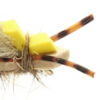
)
)
)
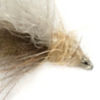
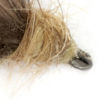
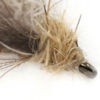
)
)
)

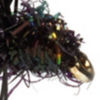
)
)
)
)
)
)
)